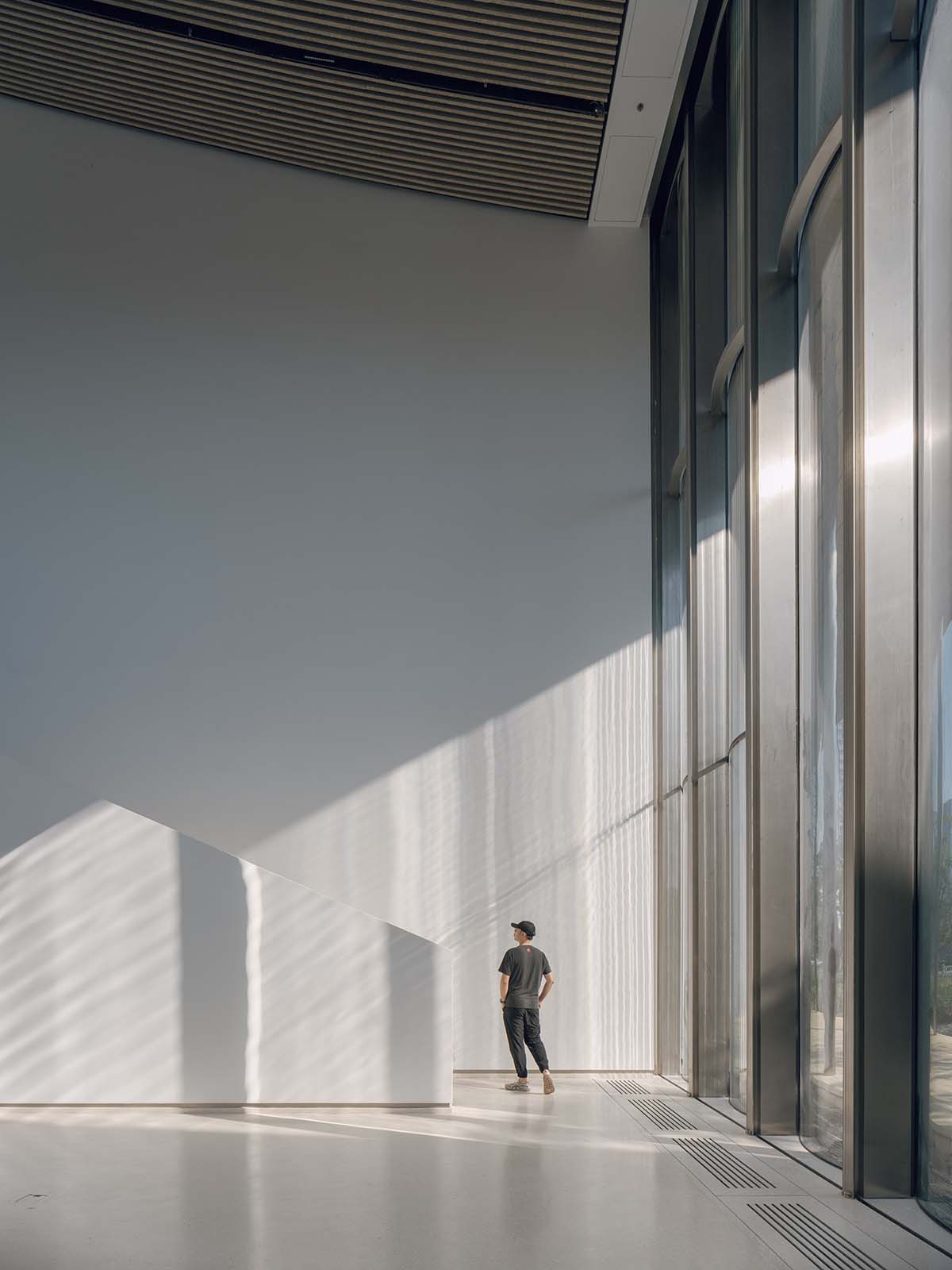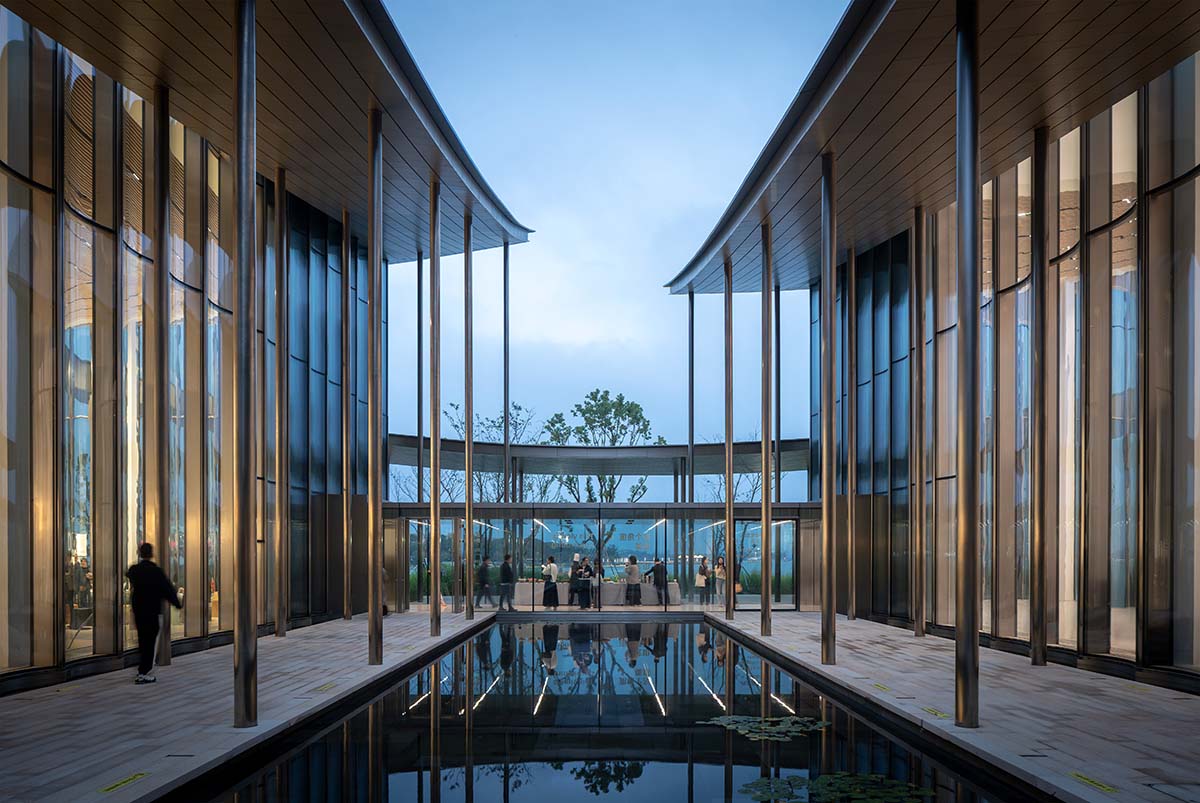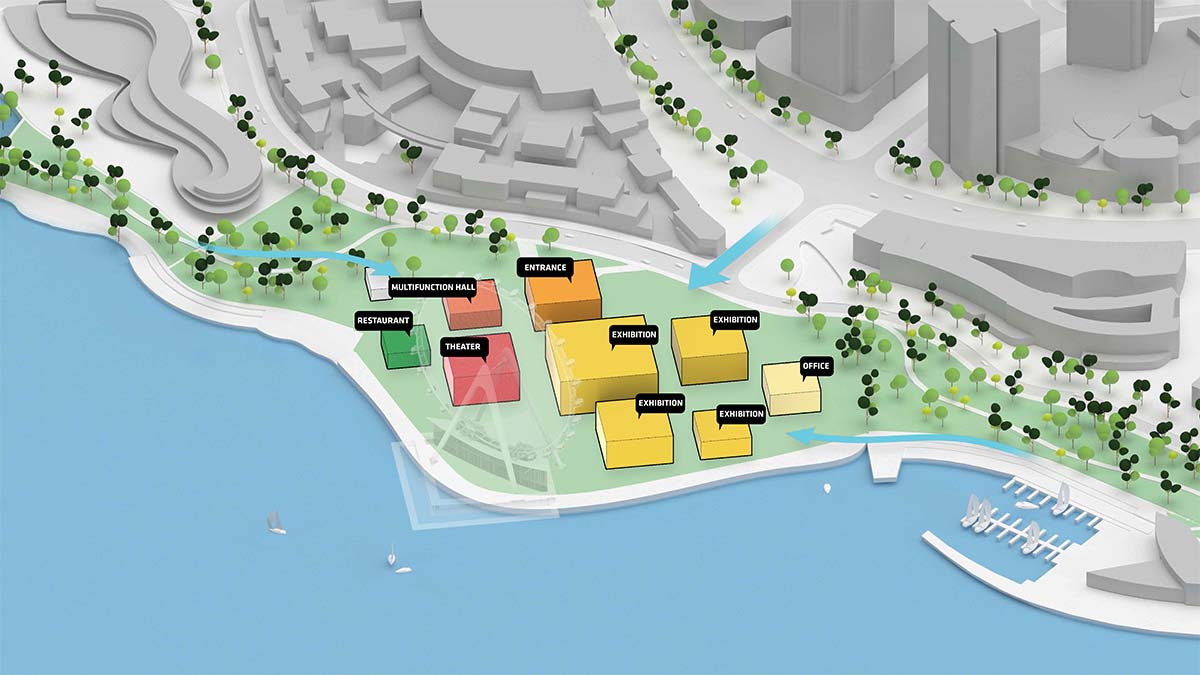Submitted by WA Contents
BIG's Suzhou Museum of Contemporary Art features ribbon-like roofs, creating a fifth facade
China Architecture News - Nov 17, 2025 - 07:12 658 views

Bjarke Ingels Group (BIG) has revealed photographs for the Suzhou Museum of Contemporary Art (Suzhou MoCA) ahead of its opening along the Jinji Lake waterfront in Suzhou, China.
The 60,000-square-meter museum presents a contemporary interpretation of the garden features that have shaped Suzhou's urbanism, architecture, and landscape for millennia. The project was designed as a village of twelve pavilions under a ribbon-like roof.
Visitors will embark on a material voyage with "Materialism", curated by BIG, beginning with stone and concluding with recyclate.
Designed by BIG in collaboration with ARTS Group and Front Inc, Suzhou MoCA, a new venue for contemporary art, design, and public life in China, is situated along the waterfront of Jinji Lake. The museum will officially open to the public in 2026.

Image © Ye Jianyuan
The museum's architecture reimagines the "lang," a long, covered corridor that follows a path, in keeping with the tradition of Suzhou's gardens.
Beneath a continuous roof with soft undulations that resemble the silhouette of tiled eaves, ten connected pavilions come together. The final two pavilions, which will span Jinji Lake and connect to the main building via covered walkways, will be constructed the following year.

Image © Ye Jianyuan
"A true fifth facade"
"Suzhou is the cradle of the Chinese garden. Our design for the Suzhou Museum of Contemporary Art is conceived as a garden of pavilions and courtyards," said Bjarke Ingels, Founder & Creative Director, BIG.
"Individual pavilions are woven together by glazed galleries and porticoes, creating a Chinese knot of interconnected sculpture courtyards and exhibition spaces."
"Weaving between the legs of the Ferris wheel, the museum branches out like a rhizome, connecting the city to the lake. The result is a manmade maze of plants and artworks to get lost within," Ingels explained.
"Its nodular logic only becomes distinctly discernible when seen from the gondolas above. Against the open space of the lake, the gentle conical curvature of the roofs forms a graceful silhouette on the waterfront. From above, the stainless roof tiles form a true fifth facade," Ingels added.

Image © Ye Jianyuan
The façades, which are covered in warm-toned stainless steel and rippled and curved glass, blur the lines between architecture and the natural world by reflecting the surrounding sky, water, and gardens.
Bridges and tunnels connect the pavilions above and below, giving the museum the flexibility to control circulation in line with exhibitions and seasons.
A series of gardens and courtyards are framed by the rooms collectively, taking guests on a trip that combines art, history, nature, and water.

Image © StudioSZ Photo / Justin Szeremeta
A large plaza in front of the Visitor Center greets guests as they arrive at the museum. From here, visitors can enter the museum or walk around the grounds, following the pathways that lead to Jinji Lake, which is visible from above while riding the Suzhou Ferris wheel.
The galleries are animated with a play of shadow and reflection as natural light enters through clerestories and skylights.
The main gallery experience is housed in four of the museum's pavilions; the other pavilions contain a café, theater, multipurpose hall, and grand entrance area. Visitors are led through the museum via a continuous walkway that splits into smaller paths between the galleries.

Image © StudioSZ Photo / Justin Szeremeta
Through a network of interconnecting gardens, the museum's landscape design offers a friendly public area across Jinji Lake. A natural movement from museum to land to lake is reflected in the gardens' gradual change from concrete to greenery to water-themed flora as visitors move closer to the waterfront.
Suzhou MoCA, a cultural icon for the city, combines passive shading, natural ventilation, and locally produced materials to earn China's GBEL 2-Star Green Building accreditation.

Image © Ye Jianyuan
Bjarke Ingels' year-long guest editorship of the Italian design magazine "Domus", where each issue focuses on a specific material, is expanded upon in the Materialism exhibition.
The display examines the ways in which the firm's architecture is shaped by stone, soil, concrete, metal, glass, wood, fabric, plastic, plants, and recyclables.

Image © Ye Jianyuan
Visitors are invited to experience the tactile and spatial aspects that characterize BIG's work through large-scale mock-ups and models of 20 BIG projects, including Google Bay View, The Plus, the Danish Maritime Museum, and the studio's own Copenhagen headquarters.
The galleries' seating is constructed from the materials that are on exhibit, offering a complete sensory experience through form and feel.
The plaques in each part are made from the appropriate media, such as terrazzo, rammed earth, and yellow rust stone, which further highlights the various ways that matter may be expressed.

Image © Ye Jianyuan
Suzhou MoCA joins BIG's global portfolio of cultural projects, which also includes the LEGO Museum in Denmark, the Musée Atelier Audemars Piguet in Switzerland, and The Twist at Kistefos Sculpture Park in Norway.
Materialism comes after BIG's earlier shows, such as Formgiving (2019), Hot to Cold (2015), and Yes Is More (2009). Prior to the Suzhou Museum of Contemporary Art's official opening in 2026, the Materialism exhibition will open to the public in the upcoming months.

Image © Ye Jianyuan

Image © Ye Jianyuan

Image © Ye Jianyuan

Image © Ye Jianyuan

Image © Ye Jianyuan

Image © Ye Jianyuan

Image © StudioSZ Photo / Justin Szeremeta

Image © StudioSZ Photo / Justin Szeremeta

Image © StudioSZ Photo / Justin Szeremeta

Concept diagram. Image © BIG / Bjarke Ingels Group

Concept diagram. Image © BIG / Bjarke Ingels Group

Concept diagram. Image © BIG / Bjarke Ingels Group

Concept diagram. Image © BIG / Bjarke Ingels Group

Concept diagram. Image © BIG / Bjarke Ingels Group

Concept diagram. Image © BIG / Bjarke Ingels Group
Recently, BIG has completed a new science center at Claremont McKenna College (CMC) in California, United States. The building's volumetric relationships were imagined as "a queen on the campus chessboard."
Additionally, the firm revealed new images for the masterplan of Telosa City, focusing on "people-centric" design, developing a comprehensive framework for sustainable and equitable urban living. Moreover, the firm designs a new Hungarian Natural History Museum in Debrecen, Hungary’s second-largest city.
Project facts
Project name: Suzhou Museum of Contemporary Art
Size: 60,000 m2
Location: Suzhou, Jiangsu, China
Client: Suzhou Harmony Development Group Co. Ltd.
Owner: Suzhou Industrial Park Culture, Sports and Tourism Bureau
Collaborators: ARTS Group Co, Front Inc, Shanghai Shuishi Landscape Design Co, Rdesign International Lighting
Project Team
Partners-in-Charge: Bjarke Ingels, Catherine Huang
Project Manager: Molly Hsiao Rou Huang
Project Architect: Tyrone Cobcroft, Kekoa Charlot, Tseng-Hsuan Wei
Design Lead: Matteo Pavanello
Team: Aileen Koh, Amanda Lima Soares Da Cuncha, Arda Özker Cincin, Athena Morella, Chih-Han Chen, Christian Vang Madsen, Cris Guoyu Liu, Desislava Georgieva, Eddie Can, Eric Wen Tung Li, Federico Martínez De Sola Monereo, Filip Fot, Filippo Cartapani, Finn Nørkjær, Haochen Yu, Huiyao Fu, Izabella Banas, Jakub Kulisa, Jan Magasanik, Jana Semaan, Jason Cheuk Hei Lee, Jiaqi Yang, Jiawen Huang, Julia Wilkosz, Jurica Pajic, Mathis Paul Gebauer, Megan Nhat Xuan Dang, Narisara Ladawal Schröder, Ole Elkjær-Larsen, Oliver Steen, Paula Domka, Pei Huang, Philip Kaefer, Phoebe Cowen, Riad Tabbara, Romain Thijsen, Shu Du, Sol Anaid Chaocon Levin, Tarek Shater, Todor Todorov Rusev, Tomasz Jakubowski, Xavier Thanki, Yanis Amasri Sierra, Yihan Liu, Yingying Guan, Zahra Khademi, Zhonghan Huang, Zuzana Faskova.
BIG Engineering: Andrea Hektor, Adele Scampoli, Alexander Gale Heiede, Andreas Bak, Bjarke Koch-Ørvad, Cristina Minguela, Ingrid Albina Oliva Lampa, Janis Bronka, Jens Max Jensen, Jesús Fernández Lindqvist, Jonathan Russell, Kannan Selvaraj, Konstantinos Koutsoupakis, Maria Capuozzo, Miles Treacy, Thomas Lejeune, Tim Christensen.
Materialism exhibition project facts
Name: Materialism Exhibition
Location: Suzhou Museum of Contemporary Art, China
Materialism exhibition project team
Partner in Charge: Bjarke Ingels, Kai-Uwe Bergmann, Jakob Lange, Cat Huang
Project Manager: Tseng-Hsuan Wei
Design Lead: Søren Martinussen, Yongwon Jo, Haochen Yu
Team: Shu Du, Claudia Bertolotti, Devanga Phukan, Dora Jiabao Lin, Futa Oba, Guanxin Luo, Jean Kekoa Charlot, Jeronimo Idarraga, Keyao Liu, Matteo Pavanello, Paula Madrid, Siyu Tian, Xiaomeng Chi, Yingying Guan.
The top image in the article © Ye Jianyuan.
> via BIG
